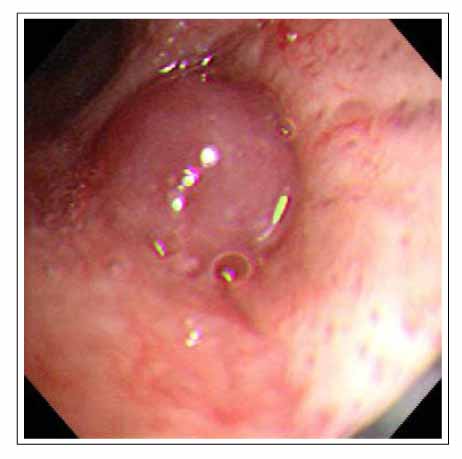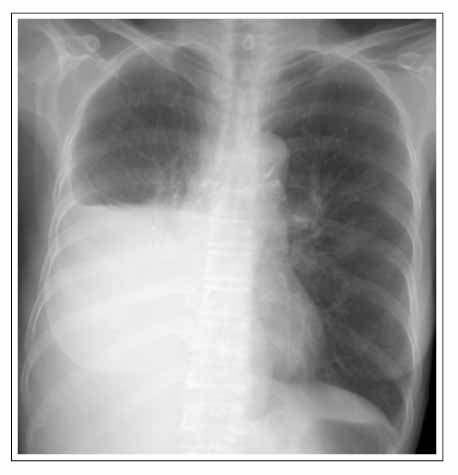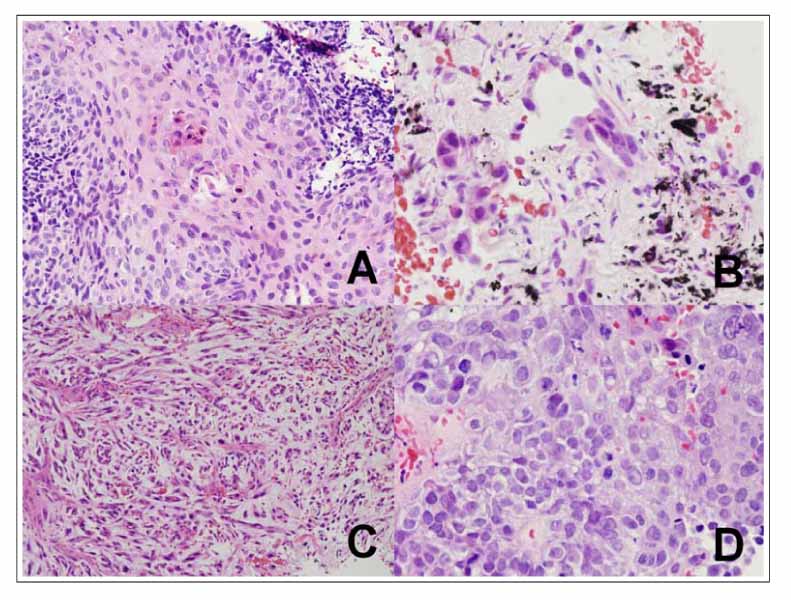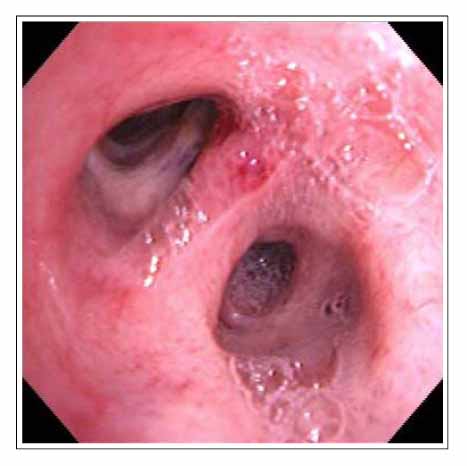Tuberc Respir Dis.
2007 Jul;63(1):94-99. 10.4046/trd.2007.63.1.94.
A Case of Spontaneously Regressed Endobronchial Sarcoma after Obstructive Pneumonia
- Affiliations
-
- 1Department of Internal Medicine, Keimyung University School of Medicine, Daegu, Korea. sbhan@dsmc.or.kr
- 2Department of Pathology, Keimyung University School of Medicine, Daegu, Korea.
- KMID: 1877324
- DOI: http://doi.org/10.4046/trd.2007.63.1.94
Abstract
- The spontaneous regression (SR) of cancer is defined as the complete disappearance of a malignant disease without adequate treatment. SR is a very rare biological event, particularly in a pulmonary sarcoma. We report the first documented case of an endobronchial sarcoma that regressed spontaneously in Korea. We encountered a rare case of a 72-year-old woman with an undiagnosed intrapelvic cystic mass, who presented with a smooth surfaced endobronchial tumor obstructing the orifice of the right lower lobe bronchus on a bronchoscopic examination. She had a prior history cervical cancer and adenocarcinoma in the right middle lobe lateral segment of her lung for which she had undergone radiation therapy. The tumor was diagnosed as an endobronchial sarcoma by the histopathology findings and immunohistochemistry. It was unclear if the tumor was a primary sarcoma of the lung or a metastatic lesion of an intrapelvic cystic mass because she refused a diagnostic exploratory laparotomy. Two months later, obstructive pneumonia of the right lower lobe with parapneumonic effusion developed with fever above 38.5degrees C for 10 days. After recovering from pneumonia, she was followed up regularly in the outpatient clinic without any specific treatment. One year later after treating the obstructive pneumonia, the follow-up bronchoscopy revealed complete SR of endobronchial sarcoma. It is believed that the obstructive pneumonia accompanied by fever above 38.5degrees C for 10 days might have played a role in this SR.
MeSH Terms
Figure
Reference
-
1. Everson TC, Cole WH. Spontaneous regression of cancer. 1966. Philadelphia: W.B. Saunders;1–10.2. Cole WH. Efforts to explain spontaneous regression of cancer. J Surg Oncol. 1981. 17:201–209.3. Hobohm U. Fever therapy revisited. Br J Cancer. 2005. 92:421–425.4. Challis GB, Stam HJ. The spontaneous regression of cancer: a review of cases from 1900 to 1987. Acta Oncol. 1990. 29:545–550.5. Chang WY. Complete spontaneous regression of cancer: four case reports, review of literature, and discussion of possible mechanisms involved. Hawaii Med J. 2000. 59:379–387.6. Ota S, Shinagawa K, Ueoka H, Tada S, Tabata M, Hamazaki S, et al. Spontaneous regression of metastatic endometrial stromal sarcoma. Jpn J Clin Oncol. 2002. 32:71–74.7. Cameron EW. Primary sarcoma of the lung. Thorax. 1975. 30:516–520.8. Suster S. Primary sarcomas of the lung. Semin Diagn Pathol. 1995. 12:140–157.9. Cole WH. Spontaneous regression of cancer: the metabolic triumph of the host? Ann N Y Acad Sci. 1974. 230:111–141.10. Stoll BA. Spontaneous regression of cancer: new insights. Biotherapy. 1992. 4:23–30.11. Papac RJ. Spontaneous regression of cancer. Cancer Treat Rev. 1996. 22:395–423.12. Abdelrazeq AS. Spontaneous regression of colorectal cancer: a review of cases from 1900 to 2005. Int J Colorectal Dis. 2007. 22:727–736.13. Stephenson HE, Delmez JA, Renden DI, Kimpton RS, Todd PC, Charron TL, et al. Host immunity and spontaneous regression of cancer evaluated by computerized data reduction study. Surg Gynecol Obstet. 1971. 133:649–655.14. Hachiya T, Koizumi T, Hayasaka M, Kubo K, Sekiguchi M, Hanyuuda M, et al. Spontaneous regression of primary mediastinal germ cell tumor. Jpn J Clin Oncol. 1998. 28:281–283.15. Lam KC, Ho JC, Yeung RT. Spontaneous regression of hepatocellular carcinoma: a case study. Cancer. 1982. 50:332–336.16. Chien RN, Chen TJ, Liaw YF. Spontaneous regression of hepatocellular carcinoma. Am J Gastroenterol. 1992. 87:903–905.17. Lachant NA, Goldberg J, Nelson DA, Gottlieb AJ. Spontaneous remission in acute myelogenous leukemia in the adult. Am J Med. 1979. 67:687–692.18. Ifrah N, James JM, Viguie F, Marie JP, Zittoun R. Spontaneous remission in adult acute leukemia. Cancer. 1985. 56:1187–1190.19. Ruckdeschel JC, Codish SD, Stranahan A, McKneally MF. Postoperative empyema improves survival in lung cancer. Documentation and analysis of a natural experiment. N Engl J Med. 1972. 287:1013–1017.20. Markovic S, Ferlan-Marolt V, Hlebanja Z. Spontaneous regression of hepatocellular carcinoma. Am J Gastroenerol. 1996. 91:392–393.
- Full Text Links
- Actions
-
Cited
- CITED
-
- Close
- Share
- Similar articles
-
- A Case of Endobronchial Fibroepithelial Polyp
- Differntiation between Endobronchial Tuberculosis and Bronchogenic Carcinoma Associated with Atelectasis or Obstructive Pneumonitis: CT Evaluation
- A Case of Massive Hemoptysis & Pneumonia Caused by Metallic Foreign Body
- Undifferentiated Pleomorphic Sarcoma of the Small Intestine with Distant Endobronchial Metastasis Presenting as Intussusception: A Case Report
- A case of obstructive pneumonia due to fish vertebrae aspirated into both bronchi






